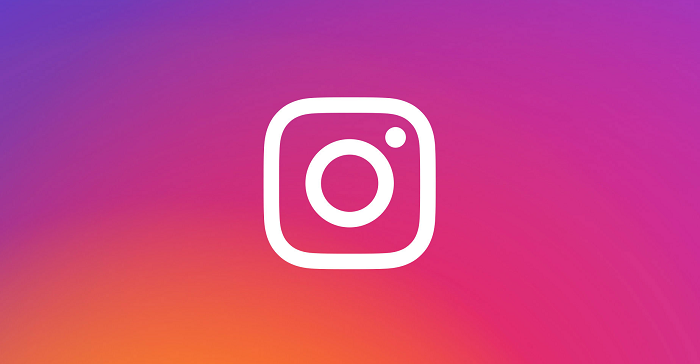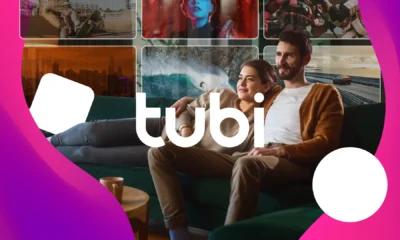SOCIAL
Instagram’s Removed In-Stream Video Ad Placements from its Advertising Options

Instagram’s taken another small step towards its next evolution, with ad partners now being informed that in-stream video ad placement is no longer available as an option in the app.
As you can see in this notification, posted by @Jaketheadnerd on Twitter, Meta is letting advertisers know that they can no longer use Instagram in-stream spots, but that they can use Reels placement as an alternative for video ads on IG.
Of course, Instagram also retired the IGTV brand back in October, when it announced the broader merger of its video offerings, so it probably comes as no big surprise to see in-stream video placement also fade out. But the announcement is important, because by moving Instagram away from disruptive, in-playback ads, that then further aligns all of its video offerings into a more consolidated, scrollable stream.
Which is likely a precursor to this:
As you can see in this example, shared by app researcher Alessando Paluzzi, Instagram’s currently testing a new, full-screen feed format, which would incorporate static posts, videos, Stories and Reels into a singular content stream. When a Story appears as you scroll, it would be delineated by the frame indicators along the bottom of the UI, while video posts would play as you swipe by, much like TikTok’s presentation style.
The concept aligns with Instagram chief Adam Mosseri’s statement back in December, in which he noted that a key focus for the platform in 2022 would be the consolidation of its elements.
“We’re going to double-down on our focus on video and consolidate all of our video formats around Reels”
Reels is Meta’s fastest growing content format, and with TikTok essentially changing the game on consumption habits, Instagram’s now working to catch up, and this new, integrated feed format would definitely bring it more into line with modern user behaviors.
Which then brings us back to video ads, and the removal of in-stream placement. Instagram still has various video upload options available, even without IGTV, with users able to upload video clips up to an hour long through the post composer. But I suspect, at some stage, Instagram will look to reduce that, in order to bring all of its content more into line, and make its feed more attuned to the TikTok/Reels format.
Within that, in-stream placement will no longer be a viable option, and it could be that Instagram’s removing the option now in order to prepare for the next change, as it then won’t have advertisers relying on this option anymore.
Which also raises a question about monetization, and how Instagram creators will make as much money from their efforts if they don’t have directly attributable ads in their video clips.
Instagram already has its Creator Bonus program for Reels clips (though payment amounts are reportedly declining rapidly of late), while it’s also been encouraging creators to look to alternative funding avenues, like branded content partnerships, IG Live badges, Subscriptions and merchandise promotions.
The latter could soon become a much bigger focus – last month, Instagram announced that it would now enable all users to tag products in their IG posts, starting with users in the US.

Eventually, Instagram could create a direct affiliate stream for such links, which would enable all users to tag products, and then get paid for any purchase activity that their posts generate.
That would be a more sustainable model than propping up creators through direct funding, and with Meta looking to integrate more eCommerce processes across all of its apps, it could also link into that broader push, giving more creators more reason to tag products, which could ideally help to shift user behaviors by exposing them to more purchase links in more posts.
On another front, that could also blunt TikTok’s move into the same.
Following the lead of its Chinese variant ‘Douyin’, TikTok’s working to add in more commerce elements, with a view to helping creators earn more money from their in-app efforts.

Commerce has become Douyin’s biggest revenue stream, and it seems likely that TikTok will move in the same direction – but if Instagram can get their first, with more inclusive, accessible shopping options, both for users and creators alike, that could be another way for IG to fend off rising competition from the short-form video app.
It seems to be all part of the bigger Instagram shift, aligning everything around the Reels/TikTok format and adding in more options for creators to make money from their content.
As such, the removal of in-stream ads makes sense, and it may be the first step towards a new set of monetization options in an expanded Instagram commerce push.
SOCIAL
Snapchat Explores New Messaging Retention Feature: A Game-Changer or Risky Move?

In a recent announcement, Snapchat revealed a groundbreaking update that challenges its traditional design ethos. The platform is experimenting with an option that allows users to defy the 24-hour auto-delete rule, a feature synonymous with Snapchat’s ephemeral messaging model.
The proposed change aims to introduce a “Never delete” option in messaging retention settings, aligning Snapchat more closely with conventional messaging apps. While this move may blur Snapchat’s distinctive selling point, Snap appears convinced of its necessity.
According to Snap, the decision stems from user feedback and a commitment to innovation based on user needs. The company aims to provide greater flexibility and control over conversations, catering to the preferences of its community.
Currently undergoing trials in select markets, the new feature empowers users to adjust retention settings on a conversation-by-conversation basis. Flexibility remains paramount, with participants able to modify settings within chats and receive in-chat notifications to ensure transparency.
Snapchat underscores that the default auto-delete feature will persist, reinforcing its design philosophy centered on ephemerality. However, with the app gaining traction as a primary messaging platform, the option offers users a means to preserve longer chat histories.
The update marks a pivotal moment for Snapchat, renowned for its disappearing message premise, especially popular among younger demographics. Retaining this focus has been pivotal to Snapchat’s identity, but the shift suggests a broader strategy aimed at diversifying its user base.
This strategy may appeal particularly to older demographics, potentially extending Snapchat’s relevance as users age. By emulating features of conventional messaging platforms, Snapchat seeks to enhance its appeal and broaden its reach.
Yet, the introduction of message retention poses questions about Snapchat’s uniqueness. While addressing user demands, the risk of diluting Snapchat’s distinctiveness looms large.
As Snapchat ventures into uncharted territory, the outcome of this experiment remains uncertain. Will message retention propel Snapchat to new heights, or will it compromise the platform’s uniqueness?
Only time will tell.
SOCIAL
Catering to specific audience boosts your business, says accountant turned coach

While it is tempting to try to appeal to a broad audience, the founder of alcohol-free coaching service Just the Tonic, Sandra Parker, believes the best thing you can do for your business is focus on your niche. Here’s how she did just that.
When running a business, reaching out to as many clients as possible can be tempting. But it also risks making your marketing “too generic,” warns Sandra Parker, the founder of Just The Tonic Coaching.
“From the very start of my business, I knew exactly who I could help and who I couldn’t,” Parker told My Biggest Lessons.
Parker struggled with alcohol dependence as a young professional. Today, her business targets high-achieving individuals who face challenges similar to those she had early in her career.
“I understand their frustrations, I understand their fears, and I understand their coping mechanisms and the stories they’re telling themselves,” Parker said. “Because of that, I’m able to market very effectively, to speak in a language that they understand, and am able to reach them.”Â
“I believe that it’s really important that you know exactly who your customer or your client is, and you target them, and you resist the temptation to make your marketing too generic to try and reach everyone,” she explained.
“If you speak specifically to your target clients, you will reach them, and I believe that’s the way that you’re going to be more successful.
Watch the video for more of Sandra Parker’s biggest lessons.
SOCIAL
Instagram Tests Live-Stream Games to Enhance Engagement

Instagram’s testing out some new options to help spice up your live-streams in the app, with some live broadcasters now able to select a game that they can play with viewers in-stream.
As you can see in these example screens, posted by Ahmed Ghanem, some creators now have the option to play either “This or That”, a question and answer prompt that you can share with your viewers, or “Trivia”, to generate more engagement within your IG live-streams.
That could be a simple way to spark more conversation and interaction, which could then lead into further engagement opportunities from your live audience.
Meta’s been exploring more ways to make live-streaming a bigger consideration for IG creators, with a view to live-streams potentially catching on with more users.
That includes the gradual expansion of its “Stars” live-stream donation program, giving more creators in more regions a means to accept donations from live-stream viewers, while back in December, Instagram also added some new options to make it easier to go live using third-party tools via desktop PCs.
Live streaming has been a major shift in China, where shopping live-streams, in particular, have led to massive opportunities for streaming platforms. They haven’t caught on in the same way in Western regions, but as TikTok and YouTube look to push live-stream adoption, there is still a chance that they will become a much bigger element in future.
Which is why IG is also trying to stay in touch, and add more ways for its creators to engage via streams. Live-stream games is another element within this, which could make this a better community-building, and potentially sales-driving option.
We’ve asked Instagram for more information on this test, and we’ll update this post if/when we hear back.
-

 PPC6 days ago
PPC6 days ago19 Best SEO Tools in 2024 (For Every Use Case)
-
SEARCHENGINES5 days ago
Daily Search Forum Recap: April 19, 2024
-
SEARCHENGINES6 days ago
Daily Search Forum Recap: April 18, 2024
-

 MARKETING6 days ago
MARKETING6 days agoEcommerce evolution: Blurring the lines between B2B and B2C
-

 WORDPRESS5 days ago
WORDPRESS5 days agoHow to Make $5000 of Passive Income Every Month in WordPress
-

 SEO6 days ago
SEO6 days ago2024 WordPress Vulnerability Report Shows Errors Sites Keep Making
-

 WORDPRESS6 days ago
WORDPRESS6 days ago10 Amazing WordPress Design Resouces – WordPress.com News
-
WORDPRESS7 days ago
[GET] The7 Website And Ecommerce Builder For WordPress
















You must be logged in to post a comment Login